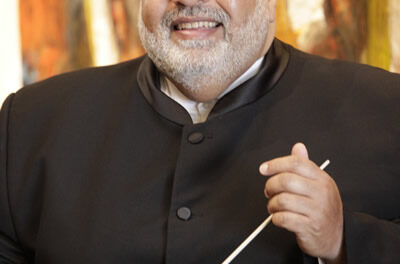The Davidson College Concert Series opened with a program of two clarinet quintets, one by Mozart and one by Brahms, presented by 89.9 WDAV in the Tyler-Tallman Hall of the Sloan Music Center. The program featured clarinetist Sam Sparrow of the Charlotte Symphony along with CSO violinists Joseph Meyer and Jenny Topilow, violist Kirsten Swanson, and cellist Sarah Markle.
Mozart wrote his quintet in 1789; Brahms wrote his in 1891. Each was written with a specific clarinetist in mind: Mozart’s was written for his friend and fellow member of the Freemasons Anton Stadler, and Brahms’ was for Richard Mühlfeld, whose playing, it is said, is what inspired Brahms to come out of his retirement in the 1880s. While each composed specifically for the clarinet and for a particular clarinetist, each composer, within his piece, treats the instrument very differently.
In Mozart’s Clarinet Quintet in A, the clarinet is certainly featured: the piece is almost like a mini clarinet concerto with accompanying strings (Mozart also wrote a clarinet concerto, two years later, two months before his death.) Alternatively, in Brahms’ Clarinet Quintet in B minor, the clarinet is featured occasionally but more often is treated as an equal and balanced member of the ensemble. Sparrow proved equally successful as both star and quintet member.
The two quintets not only contrast in the treatment of their featured instrument but they are also generally very different.
Mozart’s quintet is a four-movement piece made up of conversations between the clarinet and strings (especially with the first violin, Meyer) in the Allegro, gentle, memory-like melodies in the Larghetto, a Menuetto and an Alegretto con variazioni to finish out. Sparrow played each movement beautifully, with long, smooth, and precise phrasing. Each note was intentional and with luscious tone. Sparrow was a very musical and dynamic player who paired especially well with Meyer. Communication was evident within the whole group, which not only started and ended notes cleanly together but also smiled and swayed while watching and listening to one another.
Brahms’ quintet, also in four movements, is a dramatic and romantic piece, beginning with declarative chords by the strings. While that of Mozart is in A, Brahms’ quintet is in B minor, and a dark and mysterious mood is established right away. This quintet opens with fire and uncertainty, quickly changing tempo, meter, and dynamic with intense swells as well as pauses. The strings were especially strong throughout this piece, which, in general, offers more opportunity to be strong. Sparrow, once again, was elegant throughout.
Where Mozart’s quintet, characteristically Classical, follows an evident form and symmetry, Brahms’ quintet leaves more questions and uncertainty through its abrupt musical shifts. Both pieces are often described as “autumnal,” perhaps for themes as well as the fact that each was written more or less in the composer’s later years. If each piece is autumnal – meaning dealing with transition, contemplation, and death – each deals with the idea very differently, too. While Mozart seems to come to peace towards the end of his quintet, Brahms isn’t quite sure. Mozart ends upbeat, maybe even triumphantly, while Brahms’ powerful ending is tinged with melancholy. The pieces were written 100 years apart, but here they were juxtaposed, 15 minutes apart in the same intimate space, resulting in a special treat, both in terms of the program and also these fine musicians.
The Davidson Concert Series continues with Jon Nakamatsu, Nov. 17, as well as four more events through April. See our calendar for details.











